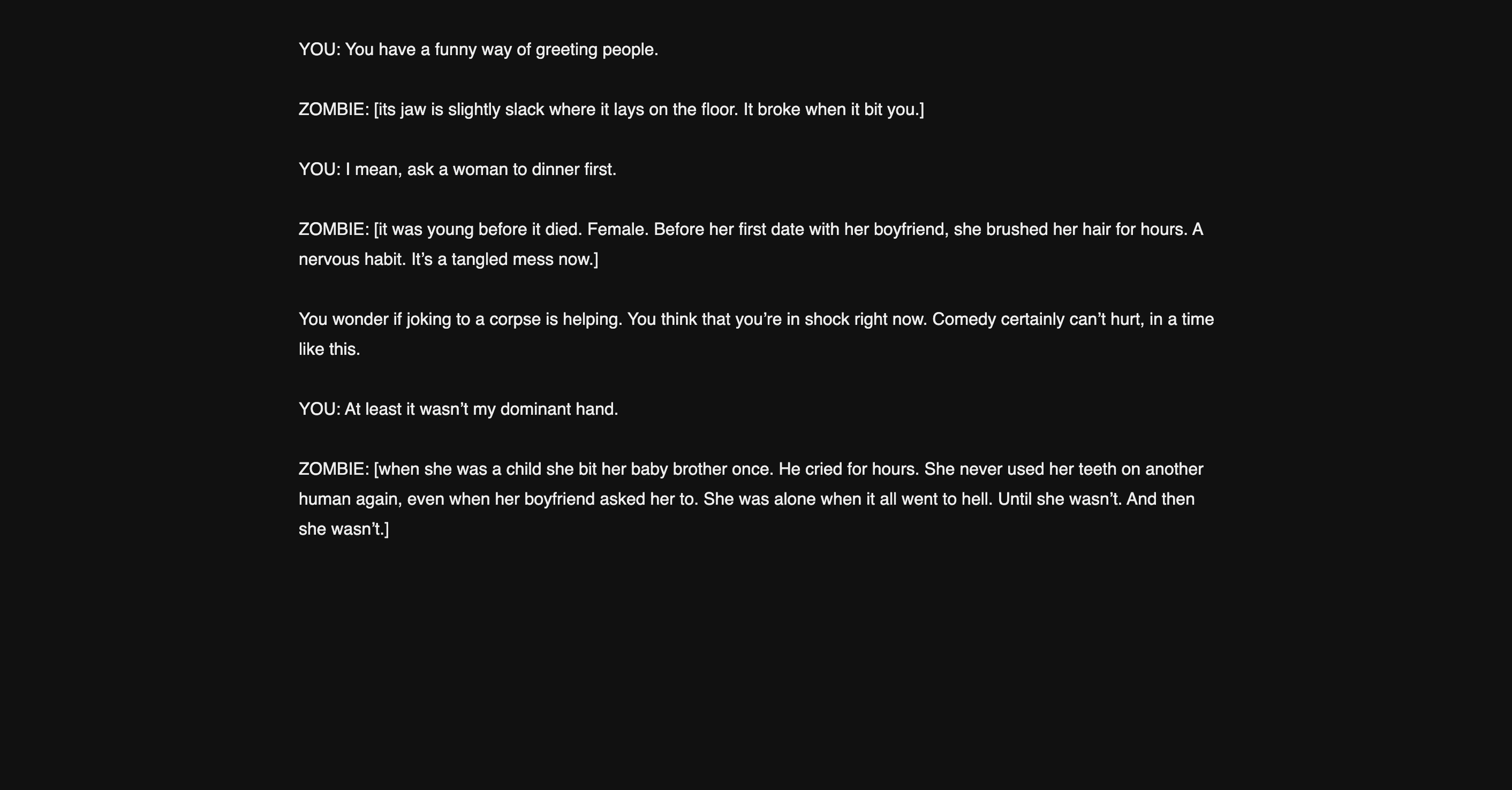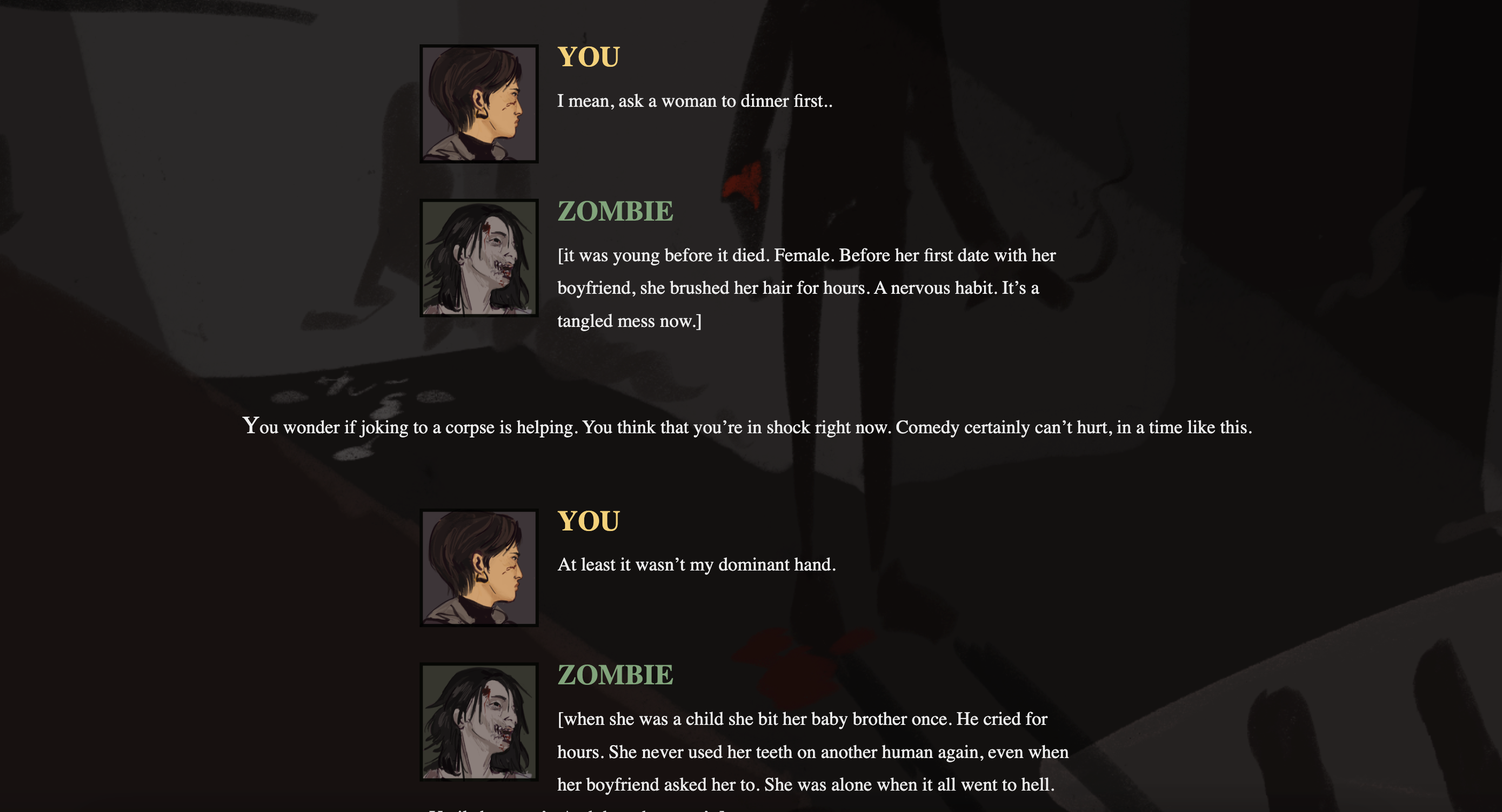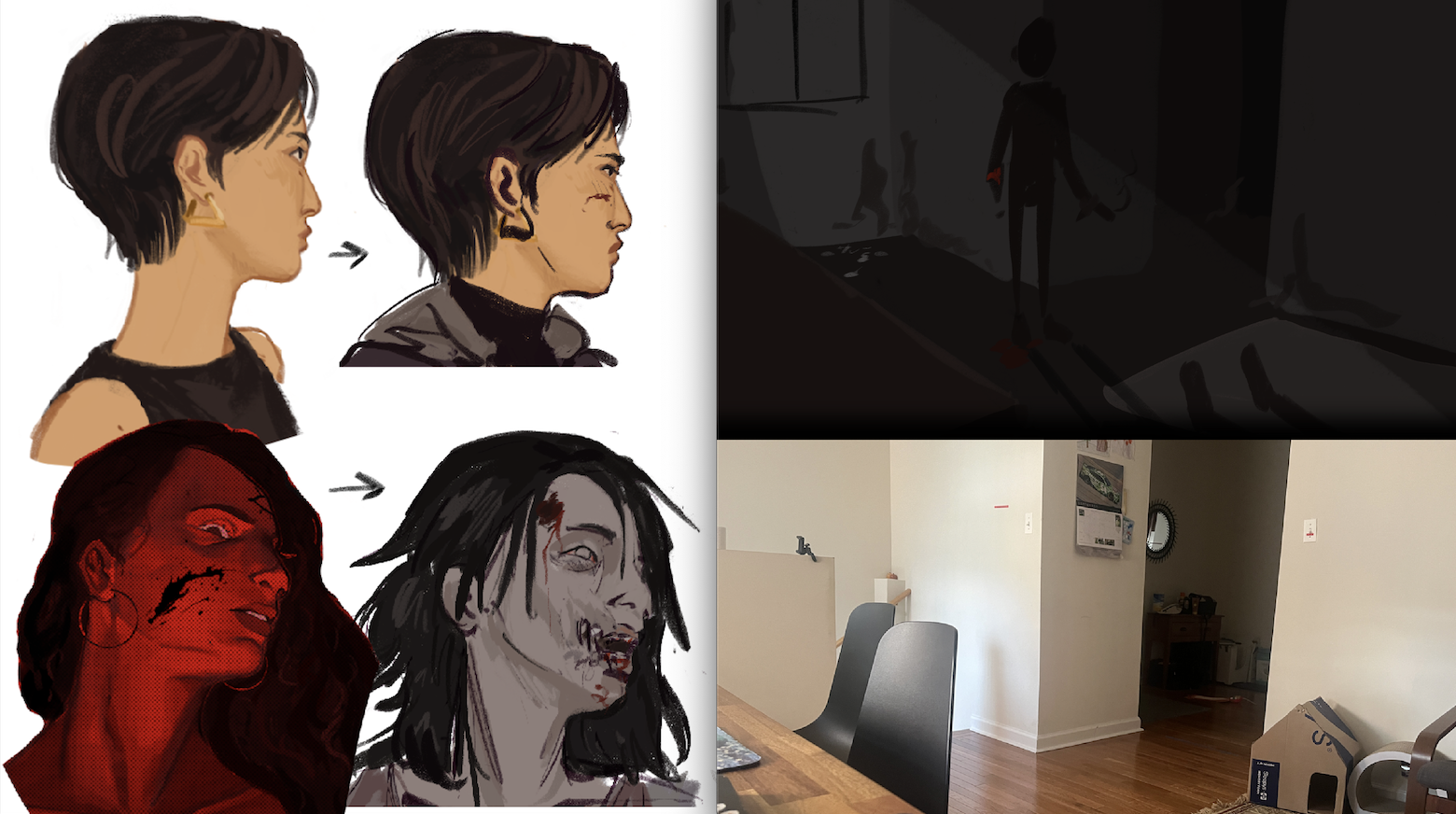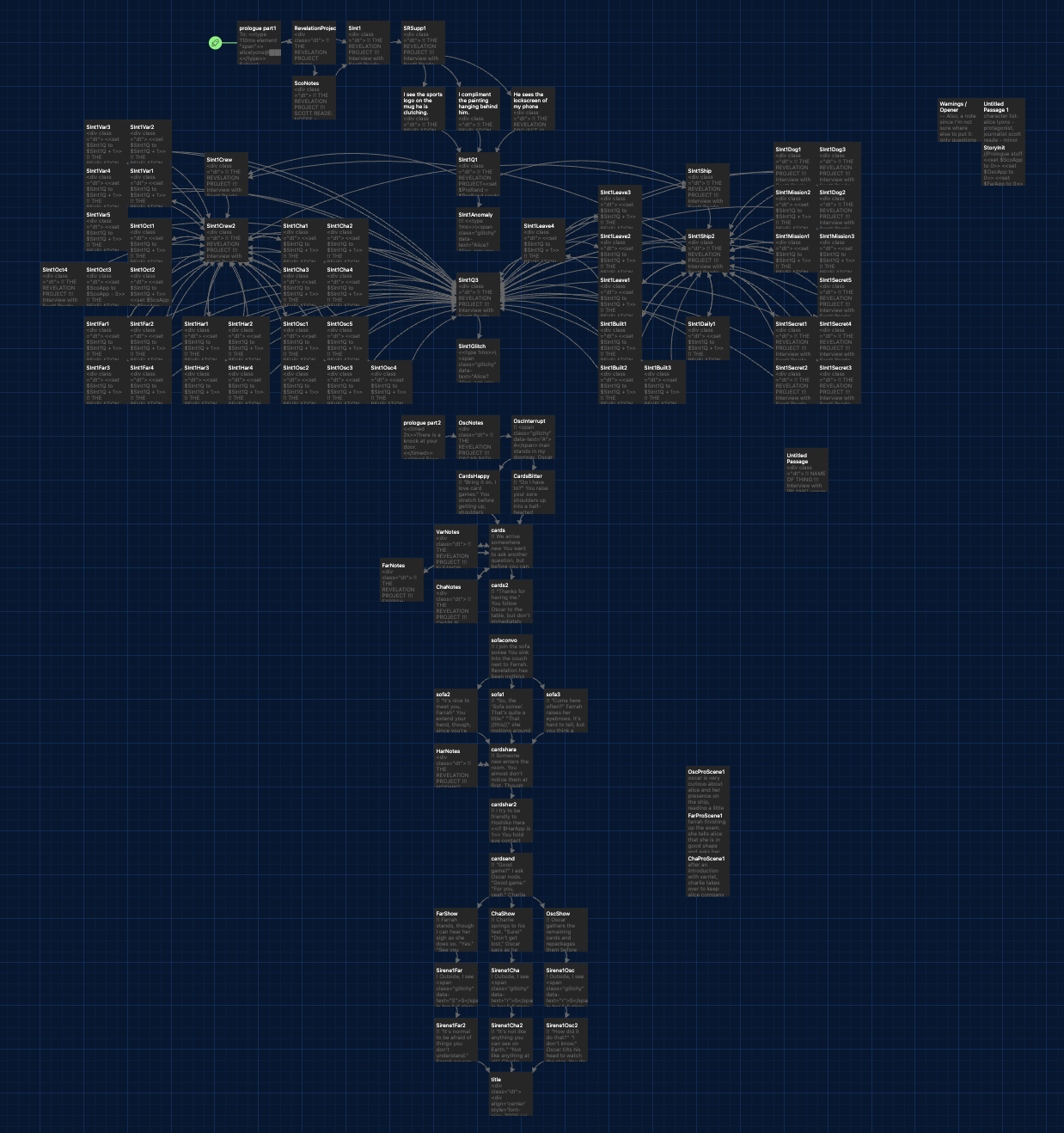Dev Log 1 - Prototyping
What was once a few words on a Google doc and mockups on a drawing program have, in the past week, become something that is… well, at least slightly interactive! Such is the beauty of game dev. Even if we’re taking small steps, we’re moving forward.
So, how do we make a concept document into a Twine game? The feedback I’ve received from various sources about that document will certainly come in handy in the coming weeks as I actually begin to work on writing the game. But my process for Twine games starts with the presentation. It’s all too easy to get bogged down in the intricacies of interactive fiction. There are a million rabbit holes you can go down, and you can spend hours, days, weeks, expanding your world and work… and then suddenly the project is due and all you have is white text on a black background. That’s what we’re trying to avoid here. I’m not looking for polish. I’m trying to get a handle on complex things like “where the text will go” and “how to add images in Twine”.


The difference isn't exactly night and day, but it's certainly an improvement. We want this to be interesting to look at!
I’d like to shout out my roommate’s everlasting patience this past week as I’ve shown them two nearly identical images, asking them to choose which one they like more and why. Option A, or Option B?
Let’s talk image creation, now that we’re on the subject. It’s lovely how Twine games can live in just a Google Doc and the engine itself, but if we want things to look pretty, we need to outsource things a little bit. My art program of choice is Procreate, which is on the iPad. Its a one time $10 purchase, has basically every feature you could ever need, and is customizable beyond that. What’s not to love?
The art in the prototype is just a bunch of placeholders. While I wanted to have things that were the general vibe I want for this game, I haven’t committed to an art style yet… nor any character or location designs. The character portraits were altered versions of other pieces I’ve recently worked on and the background is a traced over version of my own apartment, with a stick figure in the center. Gotta love the scrappy, thrown-together vibes of early game development.

If we’re looking on the mechanical side of it all, the core loop of a Twine game involves reading text, clicking through menus, and making decisions. This is inherent to the genre of interactive fiction. What’s important is making sure each decision feels like it has weight. Eighteen Hour’s intense time limit makes this doubly important. I don’t want to waste the player’s time, and I especially don’t want to waste the character’s time. It’s important to get the player to buy into the game’s concept. Now that I’ve got the game’s look down, it’ll be crucial to consider these things when writing the game. People often say good aesthetics can make a less-than-average game playable– but for interactive fiction, the art can only do so much. If we want the players to commit to this story, we need to hook them.
I look forward to developing the world and the characters further next week. Lots of maps, lots of dialogue trees. Very fun!

Files
Eighteen Hours
placeholder text
| Status | Prototype |
| Author | rvvsalka |
| Genre | Interactive Fiction |
More posts
- Dev Log 2 - Art Build5 hours ago
Leave a comment
Log in with itch.io to leave a comment.